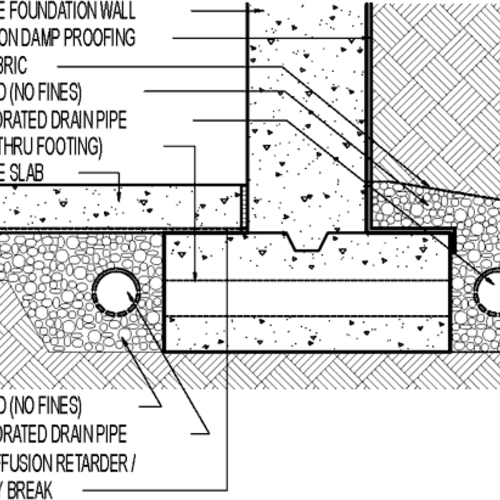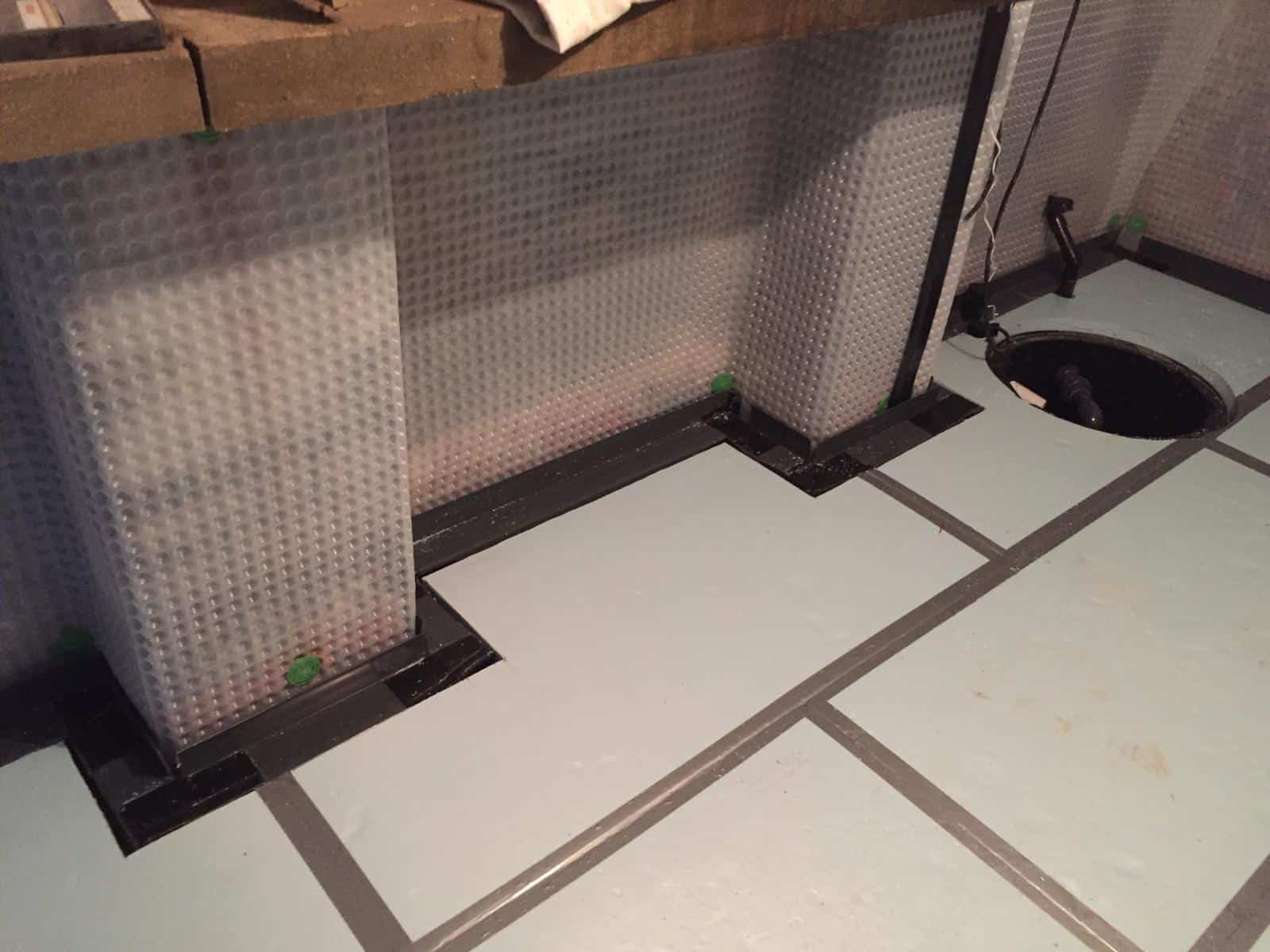Five crucial causes of penetrating damp and how mould removal newcastle can help
Wiki Article
Understanding the Value of Damp Proofing in Stopping Structural Damages
Damp proofing acts as a crucial defense against wetness seepage in buildings. This safety step can protect against considerable architectural damage, yet several residential or commercial property proprietors remain not aware of its significance. Identifying the signs of moisture and recognizing the various options available can be imperative. Nevertheless, overlooking wet proofing can lead to serious repercussions. What are the certain threats and options that home proprietors should consider?What Is Damp Proofing and Exactly How Does It Function?
Wet proofing offers as a vital obstacle versus dampness breach in buildings. mould removal newcastle. This procedure entails using specific materials and techniques to protect against water from permeating walls, floors, and other structural aspects. Commonly, wet proofing can be attained via the installment of wet evidence membrane layers, finishes, or the usage of specialized sealants.These approaches function by producing a protective layer that prevents moisture movement, ensuring that the interior setting continues to be healthy and dry. Moist proofing is particularly essential in areas prone to high humidity or groundwater, as it aids keep the honesty of the framework over time.Moreover, efficient moist proofing adds to energy effectiveness by avoiding heat loss connected with wet environments. By attending to possible moisture concerns before they rise, damp proofing functions as a proactive step in protecting structures from the damaging impacts of water damages, eventually extending their life expectancy and preserving their worthTypical Indications of Wetness in a Building
Moisture issues within a structure can manifest with a number of noticeable indicators that show the visibility of wetness. One prominent sign is the look of water spots on wall surfaces or ceilings, which frequently indicates moisture infiltration. Furthermore, gurgling or peeling off paint can suggest that excess moisture is trapped underneath the surface area, causing deterioration. One more typical indicator is the existence of mold and mildew, which grow in damp problems and can commonly be determined by their musty smell. Moreover, a rise in humidity degrees can create condensation on home windows and other surface areas, highlighting wetness troubles. Ultimately, uneven or warped flooring might signify underlying wetness that endangers architectural stability. Acknowledging these indicators early can assist reduce possible damages and maintain a secure living setting. Normal examinations and prompt activity are important in addressing dampness concerns prior to they rise.The Risks of Disregarding Damp Proofing
Overlooking damp proofing can result in substantial hazards to a structure's structural stability, as wetness accumulation may compromise wall surfaces and foundations. Additionally, extended wetness produces an atmosphere helpful to mold growth, presenting major carcinogen to residents. Attending to these threats is important for making sure both safety and security and longevity of the home.Architectural Integrity Hazards
They expose their residential properties to significant architectural integrity dangers when property owners overlook the significance of effective moist proofing. Long term moisture infiltration can result in the advancement of mold and mildew, which deteriorates fundamental components and can compromise total security. Additionally, excess moisture can deteriorate concrete and brickwork, resulting in splits and architectural failures. Timber elements are specifically susceptible; they can rot and lose load-bearing ability, presenting major dangers to the structure's structure. Unattended wet problems may draw in bugs, such as termites, which even more aggravate architectural damage. Ultimately, disregarding wet proofing actions can cause costly repair services and potential safety hazards, emphasizing the important duty of aggressive wet management in protecting the integrity of houses.
Health And Wellness Threat Problems
Just how can a relatively minor oversight cause severe health and wellness dangers? Overlooking moist proofing can create an environment for mold growth, which poses substantial health and wellness risks. Mold and mildew spores can set off allergies, breathing issues, and other health difficulties, specifically in at risk populations such as children, the elderly, and people with pre-existing problems. In addition, relentless dampness can draw in insects like rodents and pests, which bring diseases that better compromise health. The presence of wetness likewise adds to a decrease in interior air high quality, aggravating asthma and various other respiratory conditions. As a result, the failure to attend to wet issues not just intimidates architectural integrity yet also threatens the well-being of passengers, highlighting the essential demand for reliable wet proofing procedures.Different Kinds Of Damp Proofing Solutions
Different aspects can add to damp concerns in structures, picking the appropriate damp proofing solution is crucial for maintaining structural stability. Numerous alternatives are readily available, each customized to particular conditions.One usual remedy is a damp-proof membrane layer (DPM), generally made from polyethylene or bitumen, which is installed in floorings and wall surfaces to avoid moisture access. An additional option is damp-proof courses (DPC), which are layers of water resistant material placed within wall surfaces to block climbing damp.Chemical damp proofing entails infusing waterproofing chemicals into walls to develop an obstacle against moisture. Furthermore, outside treatments such as tanking, which entails using a water-proof layer to the beyond foundations, can be efficient in avoiding water penetration.Each option has its advantages and is selected based upon the structure's certain problems, environmental problems, and long-lasting upkeep considerations, making certain ideal defense versus damp-related damage.
The Price of Damp Damage vs. Prevention
Comprehending the economic implications of wet damages compared to prevention highlights the importance of aggressive procedures. The prices related to moist damages can be considerable, consisting of fixings to structural elements, mold remediation, and prospective health-related costs. Homeowners may face significant financial stress if considerable damages happens, causing increased insurance premiums and lost residential or commercial property value.In contrast, buying wet proofing solutions is normally much extra economical. Initial expenditures for avoidance methods, such as installing damp-proof membranes or boosting drainage systems, are usually surpassed by the lasting savings from avoiding expensive fixings. Furthermore, preventing damp concerns can boost a property's overall value and appeal, making it a smart financial investment. When examining the price of moist damages versus avoidance, it becomes clear that taking positive steps can protect financial passions and maintain the stability of the building with time.Picking the Right Damp Proofing Technique for Your Home
Which moist proofing technique is most ideal for a certain residential or commercial property frequently depends on different aspects, including the building's age, existing dampness problems, and local environmental problems. For older frameworks, traditional techniques such as asphalt membranes or cementitious coverings might be extra effective, as they can provide a robust barrier against climbing wet. In comparison, newer structures could take advantage of contemporary solutions like infused damp-proof programs, which are much less intrusive and can be customized to details moisture challenges.Additionally, homes in areas with high water tables or heavy rains may need more sophisticated methods, such as tooth cavity wall drainage systems or outside waterproofing. Homeowners must additionally think about the particular materials made use of in their building's construction, as some techniques might not be suitable. Eventually, a comprehensive assessment by a professional can assist building owners in selecting one of the most effective moist proofing approach tailored to their special situations.Keeping Your Damp Proofing System Over Time
Routine maintenance of a moist proofing system is important for guaranteeing its long-lasting performance and protecting a residential property from moisture-related damages. Property owners must perform routine assessments to recognize any indications of wear or concession in the wet proofing layer. This consists of checking for fractures, peeling off paint, or mold and mildew growth, which may indicate wetness intrusion.Additionally, it is suggested to tidy rain gutters and downspouts regularly to avoid water accumulation around the structure. Reapplying sealers or membranes might be needed if deterioration is observed.Engaging expert services for regular analyses can even more boost the sturdiness of see here the system. These specialists can provide insights right into possible vulnerabilities and suggest prompt repair services.Often Asked Concerns
Just How Long Does Damp Proofing Treatment Last Prior To Requiring Fixings?
The long life of moist proofing therapy normally ranges from 10 to thirty years, depending on factors such as the method utilized, environmental problems, and upkeep methods. Normal assessments can assist figure out when repair work might be needed.Is Do It Yourself Damp Proofing Effective Compared to Expert Services?
The efficiency of DIY damp proofing varies considerably. damp specialist newcastle. While some individuals might attain adequate outcomes, professional solutions usually assure complete services, leveraging proficiency and top quality products to protect against future concerns more reliably than many DIY attemptsCan Damp Proofing Improve Indoor Air Quality?
The concern of whether damp proofing can boost interior air quality emerges often. Effective wet proofing decreases wetness levels, therefore decreasing mold growth and irritants, ultimately contributing to a healthier interior setting for owners.Exist Details Rules for Damp Proofing in Different Areas?
Laws for moist proofing differ by area, frequently affected by neighborhood building ordinance and ecological conditions. Compliance warranties efficient wetness control, advertising and safeguarding frameworks safety and security, which highlights the need for adherence to these specific regulations.
What Are the Long-Term Advantages of Proper Damp Proofing?
The lasting benefits of proper damp proofing include enhanced structural integrity, decreased maintenance expenses, enhanced indoor air quality, and enhanced residential property worth. These benefits add to a healthier living atmosphere and extended lifespan of buildings. Generally, damp proofing can be achieved via the installment of damp proof membrane layers, coatings, or the usage of specialized sealants.These approaches function by producing over at this website a protective layer that inhibits dampness motion, making sure that the interior environment continues to be completely dry and healthy. Moist proofing is especially essential in locations vulnerable to high humidity or groundwater, as it helps keep the stability of the structure over time.Moreover, reliable moist proofing contributes to power effectiveness by avoiding warmth loss connected read review with damp settings. Ignoring damp proofing can lead to substantial dangers to a building's architectural stability, as dampness build-up may deteriorate walls and structures (mould removal newcastle). Various aspects can contribute to damp issues in buildings, picking the suitable moist proofing service is essential for protecting structural stability. Which wet proofing technique is most ideal for a particular residential or commercial property usually depends on different variables, including the structure's age, existing dampness issues, and neighborhood environmental conditionsReport this wiki page